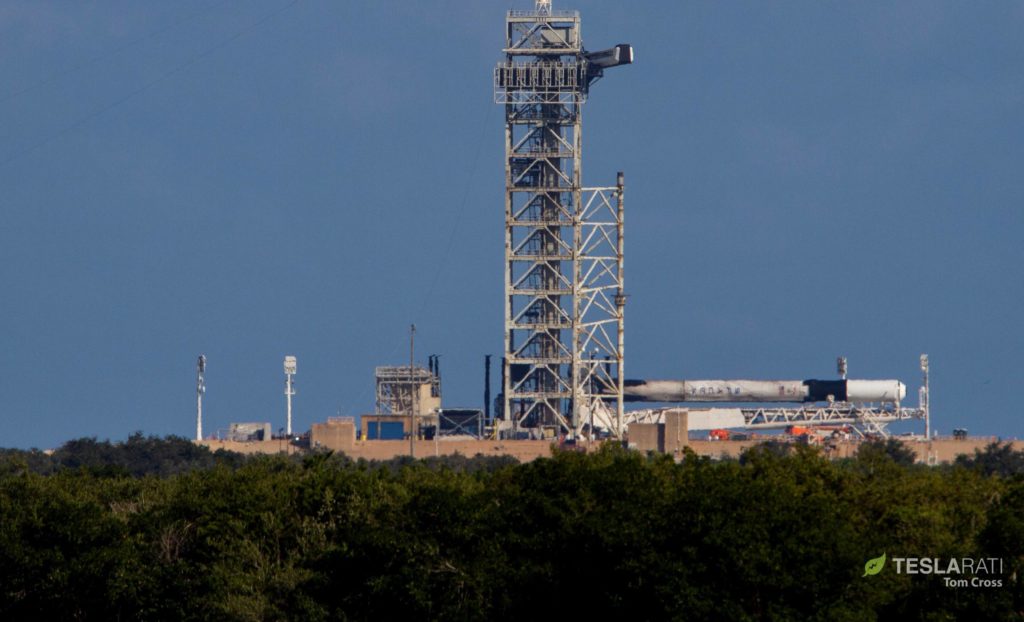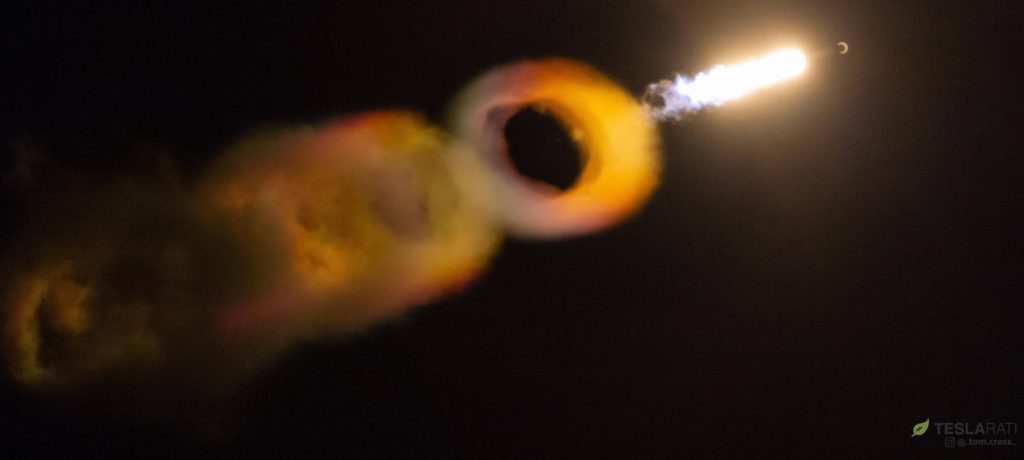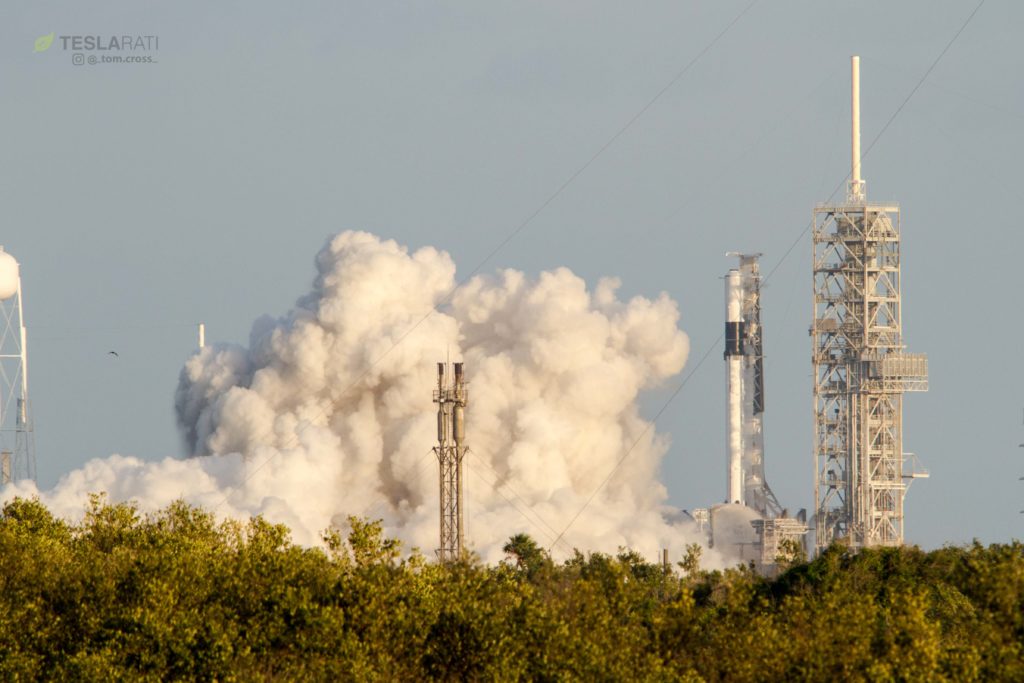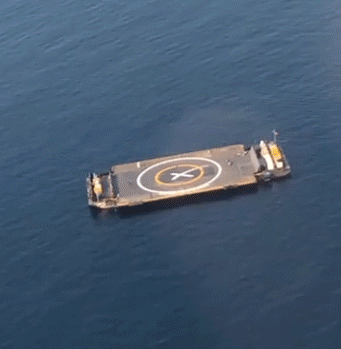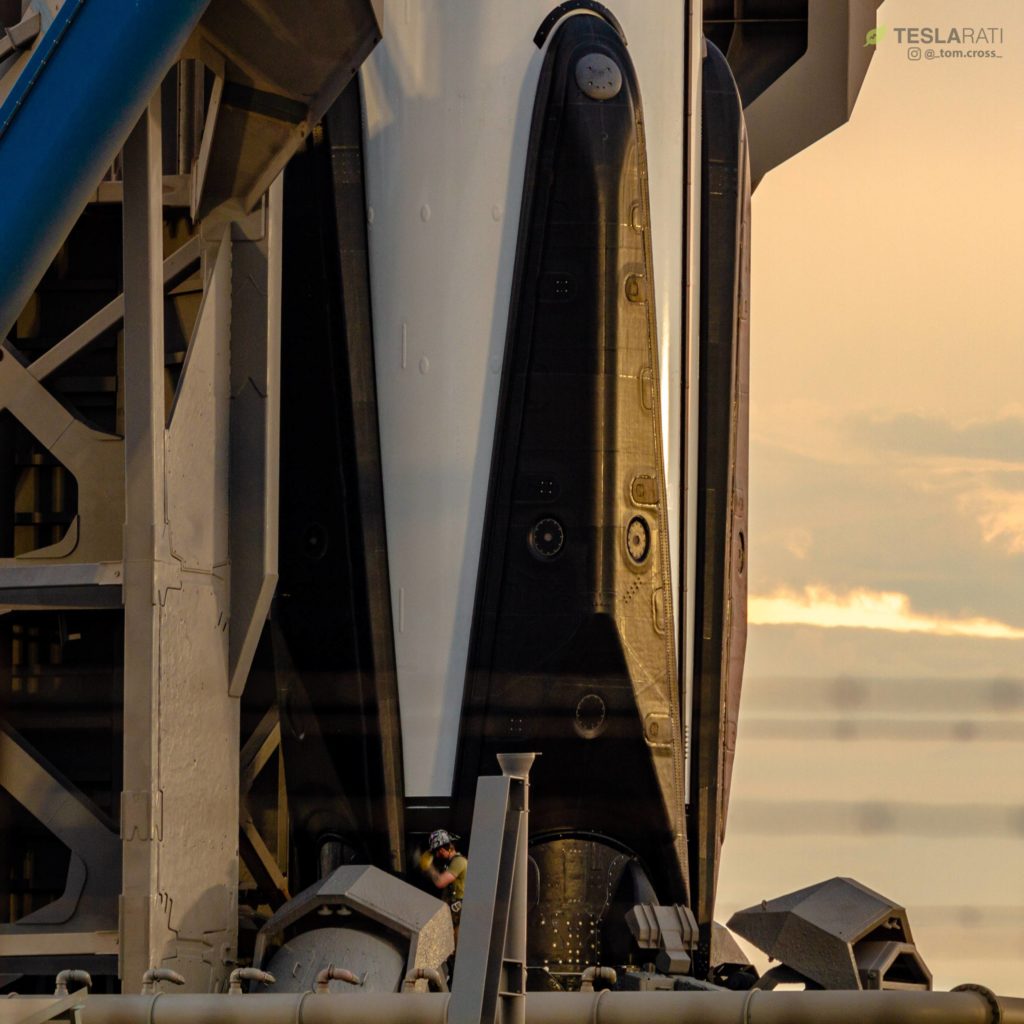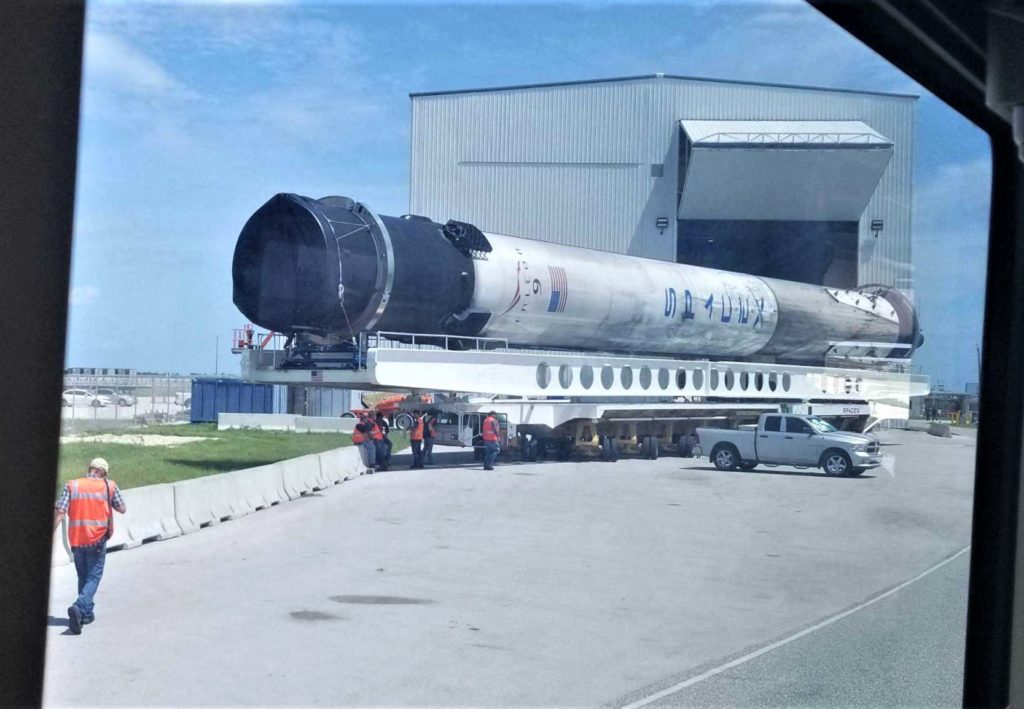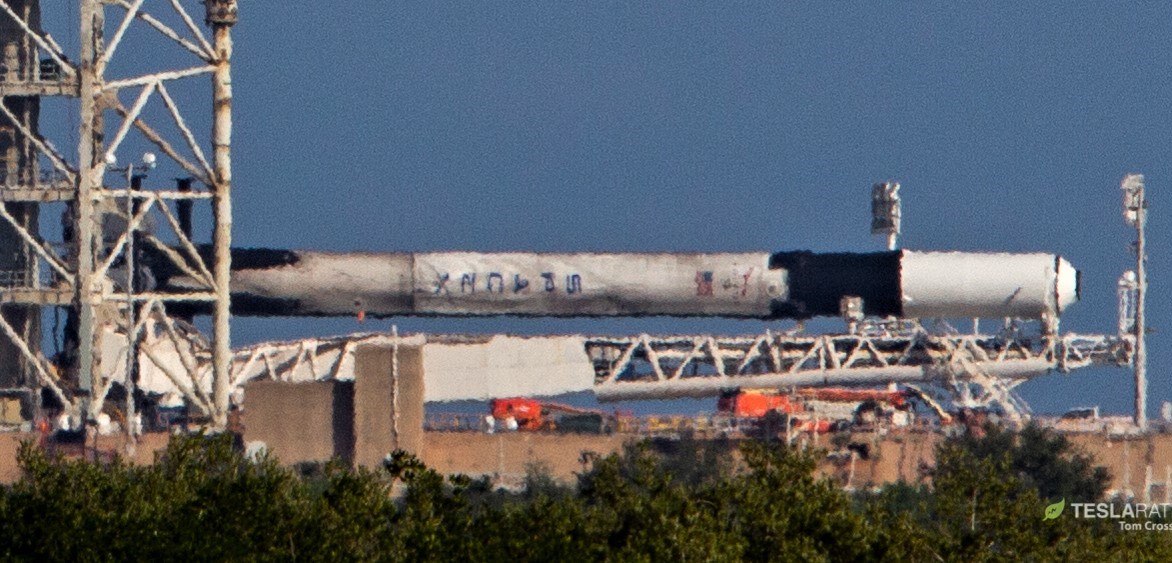
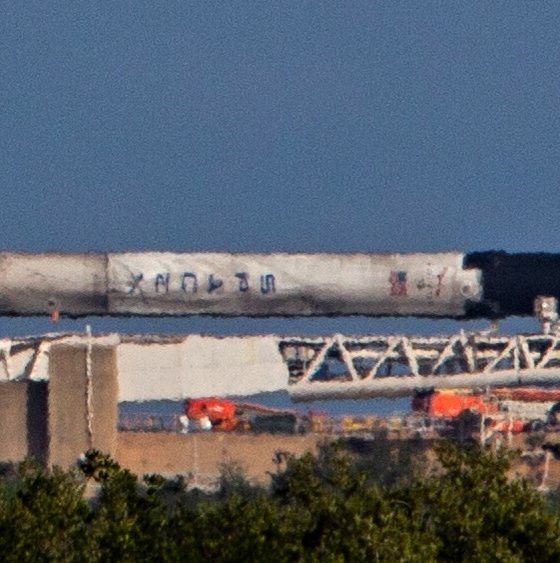
News
SpaceX’s flight-proven Falcon 9 and drone ship fleet ready for duo of launches
SpaceX is gearing up for a duo of flight-proven Falcon 9 launches and drone ship landings on both coasts of the United States, set for liftoff from Cape Canaveral’s Kennedy Space Center and Vandenberg Air Force Base no earlier than (NET) November 15th and 19th, respectively.
#SpaceXArmada: Moments ago, outbound tugboat Hawk with droneship OCISLY in tow in @PortCanaveral. Destination: Booster core landing/recovery LZ of Thursday's #Eshail2 launch, approx 408 mi E of @NASAKennedy. pic.twitter.com/n5FvBdIvpt
— Cowboy Dan (@CowboyDanPaasch) November 12, 2018
East Coast activities
On the East Coast, drone ship Of Course I Still Love You departed from Port Canaveral late last night (Nov 11) as Falcon 9 B1047 rolled onto Pad 39A for a preflight static fire test, where the rocket will be filled with a full complement of fluids (TEA/TEB, helium, nitrogen, oxygen, kerosene) and all nine Merlin 1D engines are ignited in order to replicate the seconds just prior to a real launch. That static fire test was originally expected to occur on November 10 or 11 but has obviously been pushed back a day to Nov. 12, likely meaning that the rocket’s launch – carrying Qatari communications satellite Es’hail-2 – will slip 24 hours to 3:46pm EST (08:46 UTC) on the 16th,
Following the unfortunate loss of Amos-6 during a preflight static fire in September 2016, SpaceX has since made a reasonable move away from performing static fires with payloads integrated atop the rocket, unless the customer specifically requests that it be done that way to save time. As such, Falcon 9 must be brought horizontal, rolled back to the hangar, inspected, and finally have the payload and fairing attached to the rocket, a sensitive process that demands nuance and time. Combined with an analysis of data gathered during the static fire, this process – when all goes as planned – can take at least 48 hours from start to finish, and longer still if any minor off-nominal behavior is observed or the launch customer has additional requirements (typically reserved for NASA and national security-related missions).
- B1047 horizontal at Pad 39A, November 11. (Tom Cross)
- B1047 made an extraordinary ring vortex rainbow as it smashed through Max Q, the point of highest aerodynamic stress on the rocket. (Tom Cross)
- B1046 seen mid-static fire at Pad 39A ahead of Falcon 9 Block 5’s launch debut, May 2018. (Tom Cross)
Because rockets like Falcon 9 are extraordinarily intricate and finely-tuned machines, perfectly nominal launch-related events are few and far between. In reality, the time between static fire rollout and launch readiness is rarely less than three days (72 hours), not including the process of rolling the fully-integrated rocket back out to the pad, aligning and securing the vehicle and transporter-erector (TE) over the flame trench, and finally attaching all umbilical connections and verifying vehicle health. Speaking generally, four to five days is a good rule of thumb for the time it takes to complete Falcon 9’s static fire and return the rocket to the pad after attaching the payload.
Still, it’s always a good sign when a drone ship leaves port, much like OCISLY did on the evening of the 11th. The journey to its destination will take 2-3 days, meaning that the drone ship will be ready to catch Falcon 9 whenever the rocket is ready to launch.

Drone ships and sooty rockets, oh my!
On the West Coast, SpaceX is also getting ready for drone ship Just Read The Instructions (JRTI) to depart Port of San Pedro in anticipation of a presumed sea recovery of Falcon 9 following the NET Nov 19 launch of a multi-satellite rideshare mission known as SSO-A. While SpaceX currently holds two recovery licenses for the booster, one by sea and one at the land-based LZ-4 pad, it’s possible that the company will be forced to use JRTI despite the fact that Falcon 9 will have plenty of propellant left to return itself to the launch site (RTLS). United Launch Alliance’s (ULA) next Delta IV Heavy rocket is currently on-pad with a presumably very expensive National Reconnaissance (NRO) satellite attached roughly 1.5 miles northeast of SpaceX’s LZ-4 – the rest of the gaps are easy enough to fill in.
- Falcon 9 Block 5 booster B1046 seen during both of its post-launch landings. (SpaceX/SpaceX)
- B1047 completed its first successful launch in July 2018. (Tom Cross)
- B1047 seen rolling into 39A’s integration hangar for refurbishment on July 31st. (Reddit – Kent767)
JRTI was spotted by Teslarati photographer Pauline Acalin performing some rare sea trials on November 10 after spending several weeks berthed at port for routine maintenance and deck repairs. Fairing recovery vessel Mr. Steven has also been undergoing some unusual modifications, now proudly sporting what can only be described as a steel horn recently installed on the tip of his bow deck. After sitting out a catch attempt during the launch of SAOCOM 1A to prepare for controlled helicopter drop tests performed over a period of several weeks in October, Mr. Steven will most likely be ready for another stab at operational fairing recovery during SSO-A.
Both rockets – B1047 to the East and (presumed) B1046 to the West – are flight-proven, meaning that they have flown operational orbital missions prior to their upcoming launch attempts, B1047 launched communications satellite Telstar 19V in July 2018, while B1046 has actually performed two successful launches already, Bangabandhu-1 in May and Telkom 4 (Merah Putih) in August.
For prompt updates, on-the-ground perspectives, and unique glimpses of SpaceX’s rocket recovery fleet check out our brand new LaunchPad and LandingZone newsletters!

Elon Musk
Elon Musk’s X will start using a Tesla-like software update strategy
The initiative seems designed to accelerate updates to the social media platform, while maintaining maximum transparency.

Elon Musk’s social media platform X will adopt a Tesla-esque approach to software updates for its algorithm.
The initiative seems designed to accelerate updates to the social media platform, while maintaining maximum transparency.
X’s updates to its updates
As per Musk in a post on X, the social media company will be making a new algorithm to determine what organic and advertising posts are recommended to users. These updates would then be repeated every four weeks.
“We will make the new 𝕏 algorithm, including all code used to determine what organic and advertising posts are recommended to users, open source in 7 days. This will be repeated every 4 weeks, with comprehensive developer notes, to help you understand what changed,” Musk wrote in his post.
The initiative somewhat mirrors Tesla’s over-the-air update model, where vehicle software is regularly refined and pushed to users with detailed release notes. This should allow users to better understand the details of X’s every update and foster a healthy feedback loop for the social media platform.
xAI and X
X, formerly Twitter, has been acquired by Elon Musk’s artificial intelligence startup, xAI last year. Since then, xAI has seen a rapid rise in valuation. Following the company’s the company’s upsized $20 billion Series E funding round, estimates now suggest that xAI is worth tens about $230 to $235 billion. That’s several times larger than Tesla when Elon Musk received his controversial 2018 CEO Performance Award.
As per xAI, the Series E funding round attracted a diverse group of investors, including Valor Equity Partners, Stepstone Group, Fidelity Management & Research Company, Qatar Investment Authority, MGX, and Baron Capital Group, among others. Strategic partners NVIDIA and Cisco Investments also continued support for building the world’s largest GPU clusters.
News
Tesla FSD Supervised wins MotorTrend’s Best Driver Assistance Award
The decision marks a notable reversal for the publication from prior years, with judges citing major real-world improvements that pushed Tesla’s latest FSD software ahead of every competing ADAS system.

Tesla’s Full Self-Driving (Supervised) system has been named the best driver-assistance technology on the market, earning top honors at the 2026 MotorTrend Best Tech Awards.
The decision marks a notable reversal for the publication from prior years, with judges citing major real-world improvements that pushed Tesla’s latest FSD software ahead of every competing ADAS system. And it wasn’t even close.
MotorTrend reverses course
MotorTrend awarded Tesla FSD (Supervised) its 2026 Best Tech Driver Assistance title after extensive testing of the latest v14 software. The publication acknowledged that it had previously criticized earlier versions of FSD for erratic behavior and near-miss incidents, ultimately favoring rivals such as GM’s Super Cruise in earlier evaluations.
According to MotorTrend, the newest iteration of FSD resolved many of those shortcomings. Testers said v14 showed far smoother behavior in complex urban scenarios, including unprotected left turns, traffic circles, emergency vehicles, and dense city streets. While the system still requires constant driver supervision, judges concluded that no other advanced driver-assistance system currently matches its breadth of capability.
Unlike rival systems that rely on combinations of cameras, radar, lidar, and mapped highways, Tesla’s FSD operates using a camera-only approach and is capable of driving on city streets, rural roads, and freeways. MotorTrend stated that pure utility, the ability to handle nearly all road types, ultimately separated FSD from competitors like Ford BlueCruise, GM Super Cruise, and BMW’s Highway Assistant.
High cost and high capability
MotorTrend also addressed FSD’s pricing, which remains significantly higher than rival systems. Tesla currently charges $8,000 for a one-time purchase or $99 per month for a subscription, compared with far lower upfront and subscription costs from other automakers. The publication noted that the premium is justified given FSD’s unmatched scope and continuous software evolution.
Safety remained a central focus of the evaluation. While testers reported collision-free operation over thousands of miles, they noted ongoing concerns around FSD’s configurable driving modes, including options that allow aggressive driving and speeds beyond posted limits. MotorTrend emphasized that, like all Level 2 systems, FSD still depends on a fully attentive human driver at all times.
Despite those caveats, the publication concluded that Tesla’s rapid software progress fundamentally reshaped the competitive landscape. For drivers seeking the most capable hands-on driver-assistance system available today, MotorTrend concluded Tesla FSD (Supervised) now stands alone at the top.
News
Elon Musk’s Grokipedia surges to 5.6M articles, almost 79% of English Wikipedia
The explosive growth marks a major milestone for the AI-powered online encyclopedia, which was launched by Elon Musk’s xAI just months ago.

Elon Musk’s Grokipedia has grown to an impressive 5,615,201 articles as of today, closing in on 79% of the English Wikipedia’s current total of 7,119,376 articles.
The explosive growth marks a major milestone for the AI-powered online encyclopedia, which was launched by Elon Musk’s xAI just months ago. Needless to say, it would only be a matter of time before Grokipedia exceeds English Wikipedia in sheer volume.
Grokipedia’s rapid growth
xAI’s vision for Grokipedia emphasizes neutrality, while Grok’s reasoning capabilities allow for fast drafting and fact-checking. When Elon Musk announced the initiative in late September 2025, he noted that Grokipedia would be an improvement to Wikipedia because it would be designed to avoid bias.
At the time, Musk noted that Grokipedia “is a necessary step towards the xAI goal of understanding the Universe.”
Grokipedia was launched in late October, and while xAI was careful to list it only as Version 0.1 at the time, the online encyclopedia immediately earned praise. Wikipedia co-founder Larry Sanger highlighted the project’s innovative approach, noting how it leverages AI to fill knowledge gaps and enable rapid updates. Netizens also observed how Grokipedia tends to present articles in a more objective manner compared to Wikipedia, which is edited by humans.
Elon Musk’s ambitious plans
With 5,615,201 total articles, Grokipedia has now grown to almost 79% of English Wikipedia’s article base. This is incredibly quick, though Grokipedia remains text-only for now. xAI, for its part, has now updated the online encyclopedia’s iteration to v0.2.
Elon Musk has shared bold ideas for Grokipedia, including sending a record of the entire knowledge base to space as part of xAI’s mission to preserve and expand human understanding. At some point, Musk stated that Grokipedia will be renamed to Encyclopedia Galactica, and it will be sent to the cosmos.
“When Grokipedia is good enough (long way to go), we will change the name to Encyclopedia Galactica. It will be an open source distillation of all knowledge, including audio, images and video. Join xAI to help build the sci-fi version of the Library of Alexandria!” Musk wrote, adding in a later post that “Copies will be etched in stone and sent to the Moon, Mars and beyond. This time, it will not be lost.”
